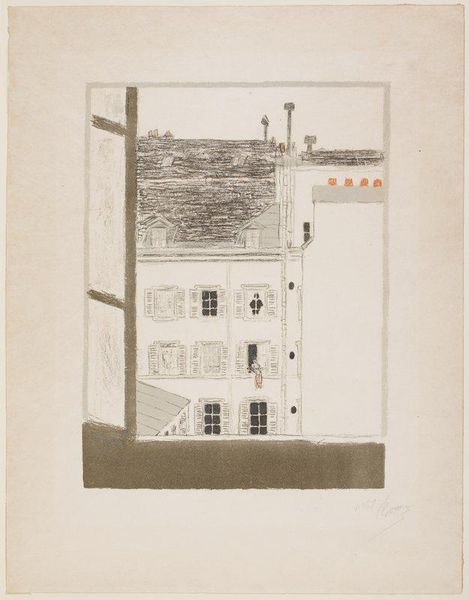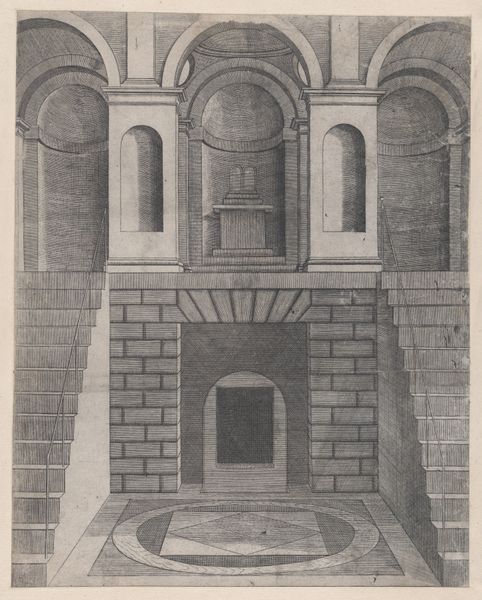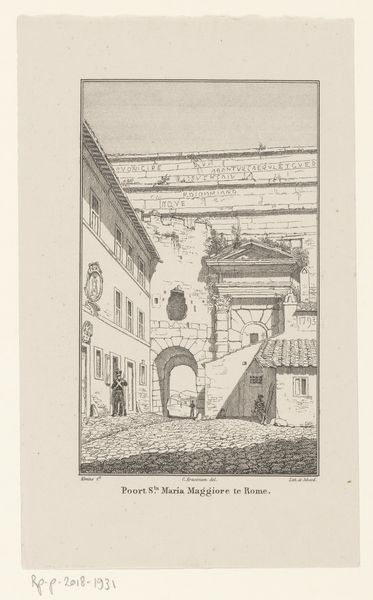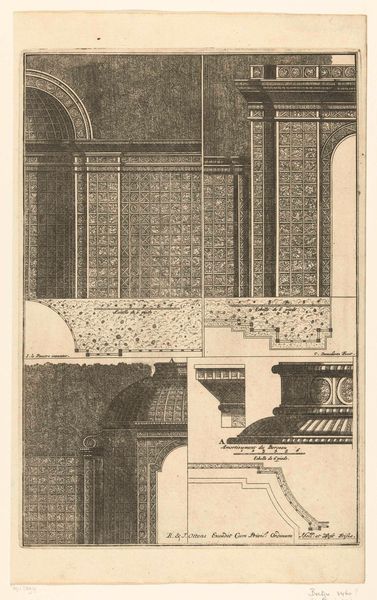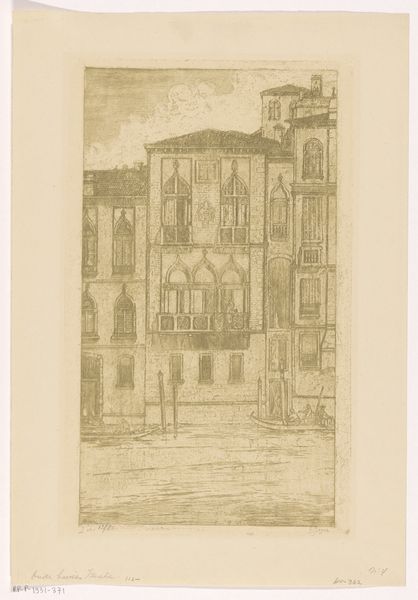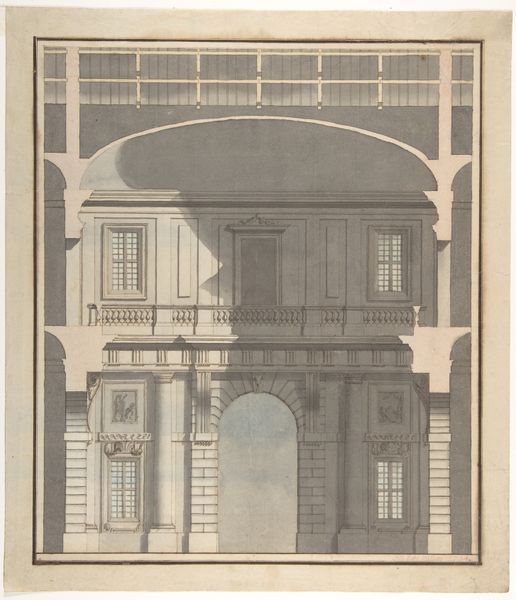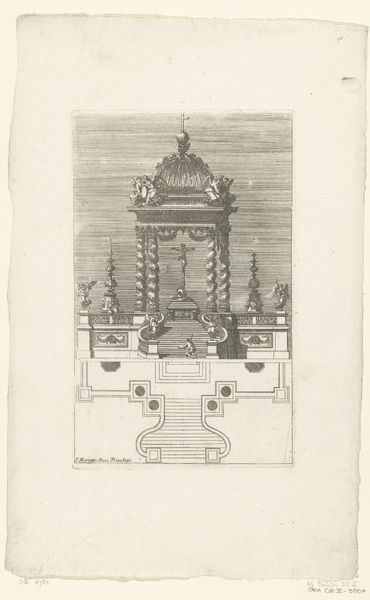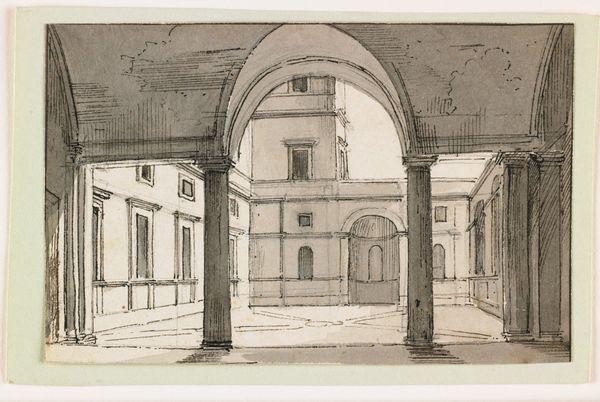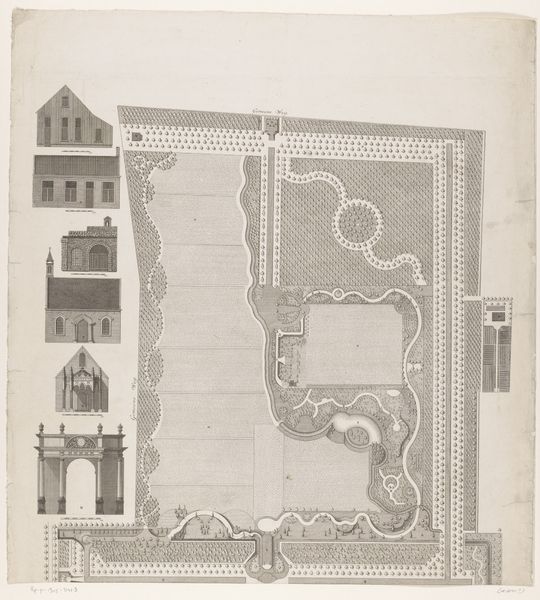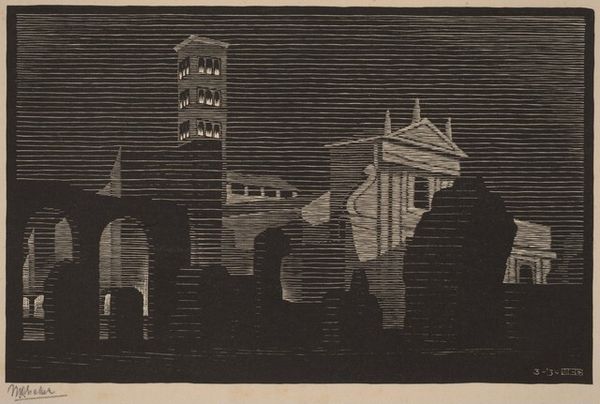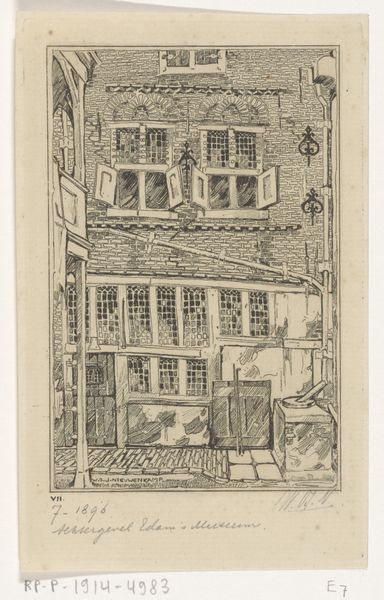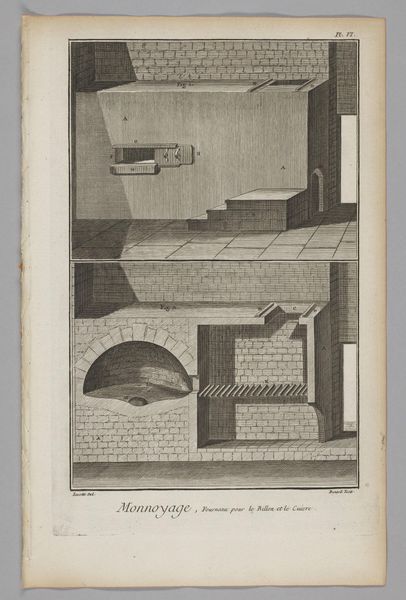
drawing, print, engraving, architecture
#
drawing
# print
#
old engraving style
#
form
#
geometric
#
cityscape
#
northern-renaissance
#
engraving
#
architecture
Dimensions: height 146 mm, width 95 mm
Copyright: Rijks Museum: Open Domain
Editor: So, this is "Huis van Salomo," or "House of Solomon," an engraving made around 1524 by Georg Lemberger. The sharp lines and geometric forms give it this incredibly precise, almost austere feel. What strikes you most about it? Curator: I am drawn to how the materiality of the engraving – the incised lines on the metal plate – dictates the architectural forms. Lemberger isn't just representing architecture; he's showcasing the *process* of architectural depiction. Editor: Interesting! So, you see the material constraints almost becoming the subject matter themselves? Curator: Precisely. Look at the patterned surfaces, the way he renders texture through repetitive lines. It calls attention to the labor involved. It also asks us: what social class had access to this type of print, and what need was it fulfilling for them? Editor: So, instead of just admiring the aesthetic, you’re prompting us to think about who commissioned this and how the labor of its creation impacted the result. Curator: Absolutely. The engraving technique allowed for the mass production of these images, circulating architectural ideas among a burgeoning middle class eager to display their worldly awareness. Is it a celebration of Solomon or of printmaking itself? Editor: That's a fantastic point; I never considered that the rising popularity of printmaking could be a theme itself. Thank you, this changes my view. Curator: I agree. By interrogating the medium and its impact, we get a richer understanding of the art’s social function in its time.
Comments
No comments
Be the first to comment and join the conversation on the ultimate creative platform.
